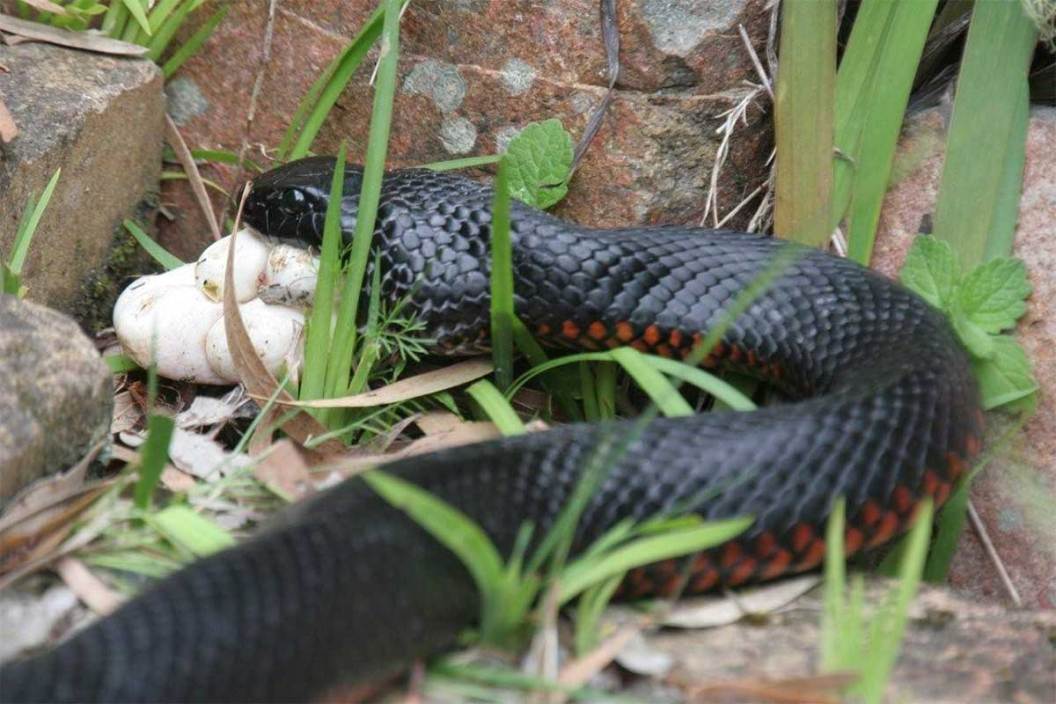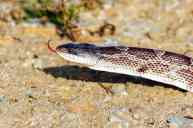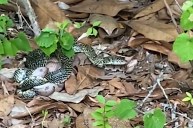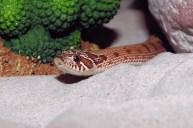A snake's diet is more varied than one might think.
Like it or not, there are literally thousands of types of snakes slithering around our planet, especially in the wild, wooded places most outdoor enthusiasts know and love.
For many people, the prospect of encountering any species of snake is enough for them to shudder or recoil in alarm. There's likely something primal engrained into our DNA that makes most people scorn these reptiles out of fear of the venom some carry.
However, most of the different types of snakes you'll encounter are likely to be non-venomous, and more afraid of you than you are of them. Because so many people give snakes a wide berth, many don't take a lot of time to learn much more about them.
For instance: what do snakes eat? You might be able to name a few items, but do you know the full extent of prey hunted by these carnivorous reptiles?
You might be surprised at what else is on the menu besides the usual small rodents.
What do snakes eat?

Getty Images: Jupiter Images
All snakes are carnivores. However, their diet really depends on the size and species of snake. Obviously, small snakes like the milk snake cannot eat meals as comparatively large as something like a ball python or anaconda.
We'll start with the garter snake since it's probably the most common of the smaller snakes in North America. The primary diet for these snakes is slugs, earthworms, crickets, and other small invertebrates. They also like to eat small amphibians like salamanders, frogs, and toads. Garter snakes are also known for being excellent at fishing for small minnows.
Most mid-sized serpents like rattlesnakes, rat snakes, cottonmouths, racers, and the like prefer to eat small mammals like mice and rats. This makes them more beneficial to humans than most give them credit. They also like to target small birds, squirrels, chipmunks, and even rabbits if they can catch one. Some, like the Eastern Massasauga rattlesnake, will also seek out things you might not expect like lizards and crayfish for food.
Aside from the usual live prey, some like the corn snake and king snake, also incorporate eggs into their diet. Some parts of the world host dedicated egg-eating snakes that spend their whole lives opportunistically raiding the nests of birds and other reptiles.
Speaking of other reptiles, snakes are notorious and unashamed cannibals in the right situations. Some venomous snakes, like the legendary king cobra, prey upon other snakes almost exclusively.
When it comes to the largest snakes on Earth like the python, anaconda, or boa constrictor, the size of the prey goes up substantially. When they are younger, they eat rodents like mice and rats. As they get older, they start tackling larger critters, swallowing their prey whole.
Just how big are the things snakes are known to eat? Some of these large snakes have been known to take down deer, impala, and other hoofed ungulates. In South America, medium-sized mammals like the capybara are a common target of these big serpents. Big cats like panthers and ocelots can be vulnerable when they are younger.
Pythons and anacondas have also been documented feeding on large lizards many times. Even crocodiles and caimans are not safe if the snake is large enough. Livestock are particularly vulnerable, especially when young. And though it's rare, there have been reports of family pets (sorry, dog and cat owners) subjected to the jaws of a snake, both in this country and beyond.
Many people are surprised what these snakes can eat. It's usually the hinged lower jaw that allows them to swallow food whole, even if it looks too large to eat.
It's a fascinating thing to think about, and likely another reason snakes are viewed the way they are among common cultures across the world.
How do snakes catch their prey?
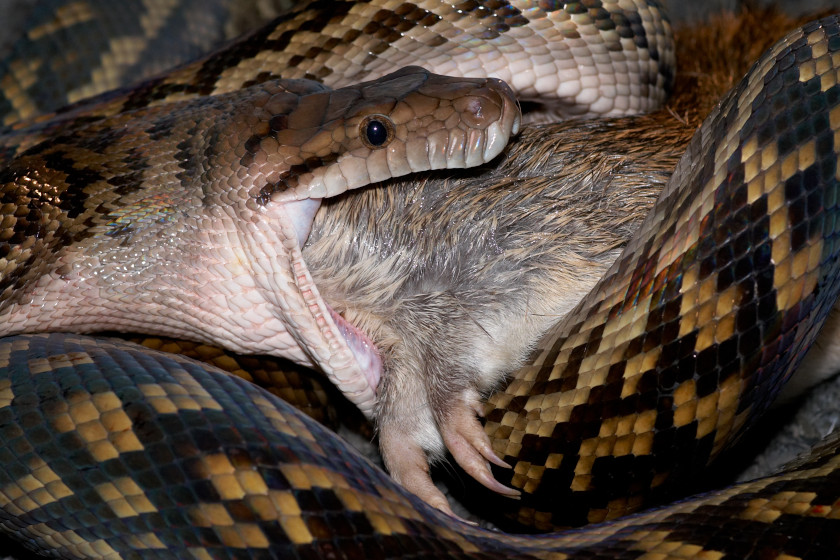
Getty Images: Wesley Tolhurst
Regardless of the species, most snakes are almost exclusively ambush predators. Their natural color patterns allow them to blend into their surroundings, laying in wait for some unlucky prey item to wander past. When it gets within range, they'll strike fast. If it's a venomous snake, it will likely wait for the toxin to kick in and subdue their prey.
Constrictors, like the python and boa, coil themselves around their victim. The common visualization of a snake wrapped around its prey several times has led to a misconception about what's actually happening.
Many people mistakenly believe constrictors crush their prey to death. It's an idea that likely persists due to bad horror movies with killer snakes. However, it's the cutting of the supply of oxygen that really subdues their dinner.
There's one more particularly interesting thing about how some snakes hunt for their dinner. The majority of snakes have the same five senses as humans, but a few types have a sixth sense of heat detection. It's a hypersensitivity to changes in temperature, allowing them to locate other animals and trigger a strike. Some snakes are able to feel the warm heat of a body, making sit-and-wait tactics nearly flawless for a quick predatory subspecies like a rattler or cobra.
Snakes hunt and consume their prey in a variety of ways, and the things they eat are even more varied than that. Even though that may disgust or disturb some people, they are a necessary part of the food chains that keep everything in balance in nature. Without snakes, we'd feel a void we likely aren't prepared to fully understand. But with a little knowledge and understanding, we can respect them and their role.
For more outdoor content from Travis Smola, be sure to follow him on Twitter and Instagram For original videos, check out his Geocaching and Outdoors with Travis YouTube channels.
READ MORE: A QUICK GUIDE TO ALL 18 SPECIES OF MICHIGAN SNAKE
